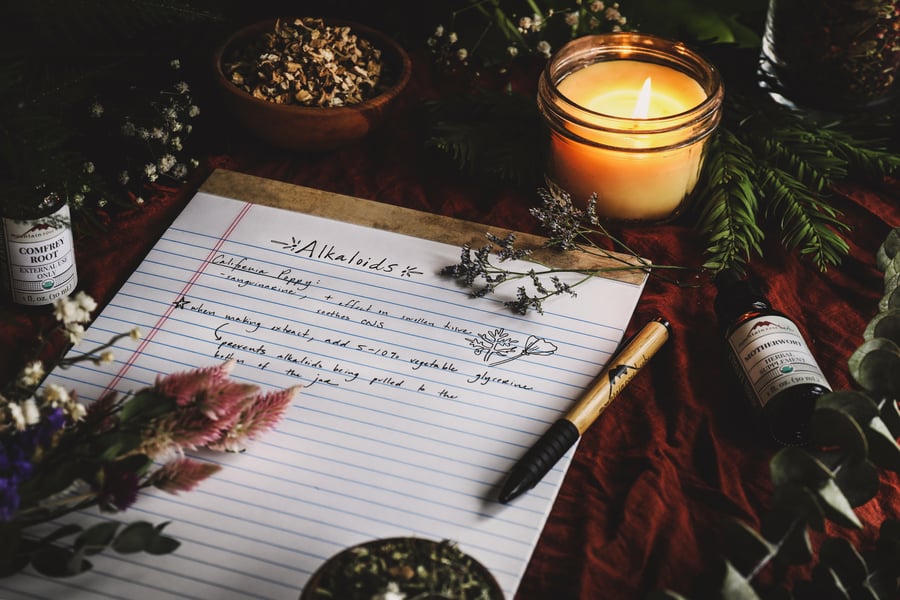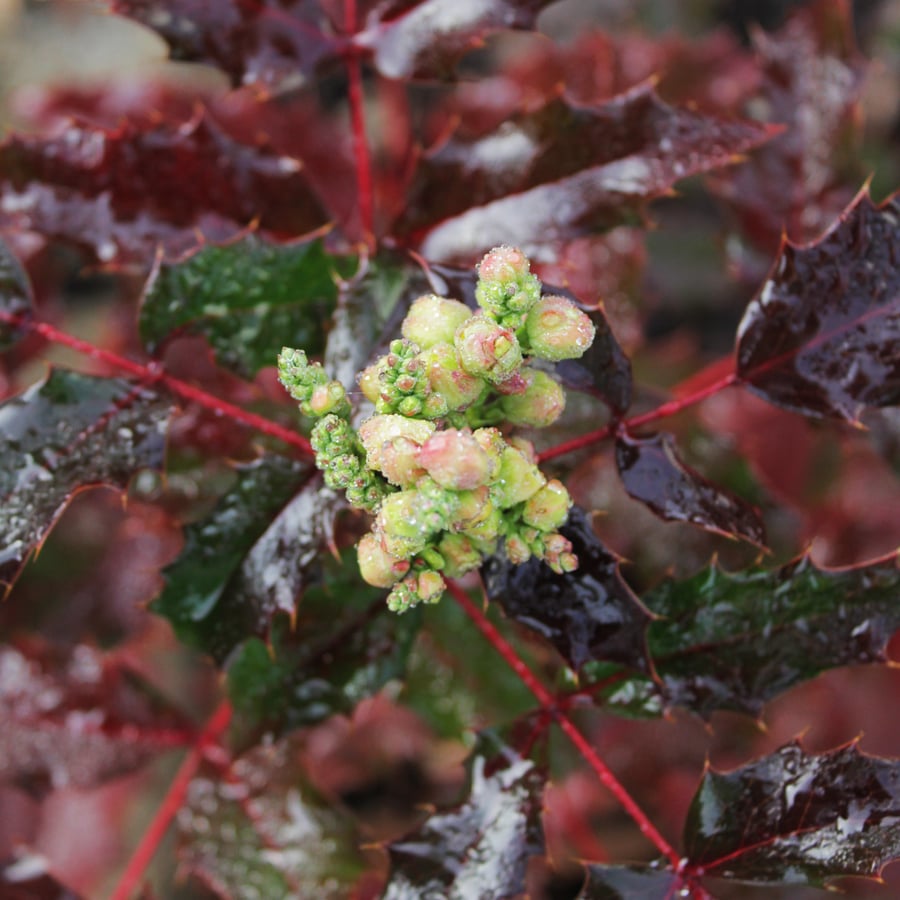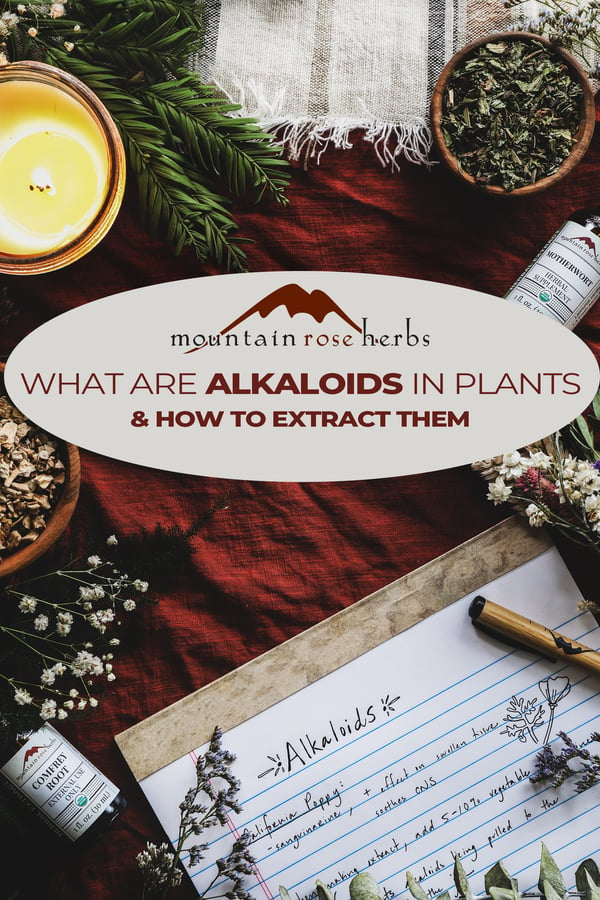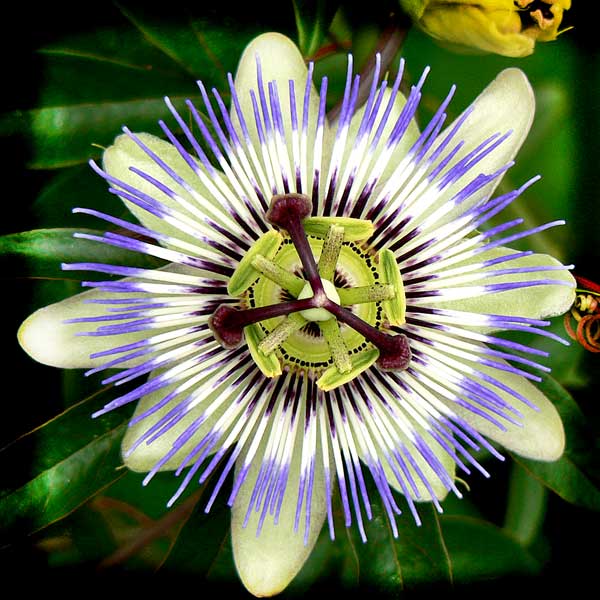
In our quest to unravel the tangled strings of phytochemistry, it’s important to understand that it takes time and practice to grasp the ins and outs. Taking it slowly, leaning into one constituent group at a time, can help the herbalist fully embrace their actions and needs. While studying the constituents in plants and the menstrua that extract and preserve them seems a bit too “science-y” for some, remember that is what the alchemists of yesterday were all about. Perhaps they didn’t have names such as polysaccharides, antioxidants, terpenes, and the like. However, they laid the groundwork for herbalists today with their attempts to classify and catalog the reactions of herbs in the bodies of their patients. It was in the 17th century that alchemy became chemistry as the emphasis leaned more toward experimentation and critical thinking and relied less on spirituality and mysticism. We, as experienced or budding herbalists, can explore both critical thinking and the mystical side of plants.
Let’s discuss alkaloids. Alkaloids in plants are very diverse in actions, with each plant alkaloid having specific and strong functions. It’s best to research the particular alkaloid/s in the plant before using them so that you can gain a firm understanding of their strength and usage. Please refer to my article Phytochemistry For Beginners: Constituent Groups and the Menstrua That Love Them for Dr. James Duke's Phytochemical & Ethnobotanical Databases. It’s a quick and easy reference guide to researching constituents in plants and their actions in the body.
Herbal preparations can be strong! Alkaloids can be strong, or damaging, or fatal, depending on the alkaloid. Remember, plants can’t move away from a predator, or go to the pharmacy, local naturopathic doctor, or herbalist. Plants must create chemicals to deter or kill what is feeding on or infecting them.
Alkaloid names end in "ine" as in the pyrrolizidine alkaloids in Comfrey (Symphytum officinale), isoquinoline alkaloids in Oregon grape (Berberis aquifolium), stachydrine in motherwort (Leonurus cardiaca), and sanguinarine in California poppy (Eschscholzia californica).
Concentrated in leaves, barks, and roots, alkaloids are soluble in 45% ethanol (100-proof alcohol will suffice), acetic acid (vinegar), and some, like caffeine in coffee, in water. Honey may not pull out some alcohol-soluble alkaloids. Generally speaking, heat tends to render alkaloids unstable.
Comfrey Root
Let’s explore comfrey root. The pyrrolizidine alkaloids in comfrey root can be damaging to the liver, however, the root is very rich in tissue-repairing mucilage. What’s important to know when desiring to utilize the benefits of comfrey without extracting the “P” alkaloids is that the solubility of the P alkaloids is in water, and not in oil. This makes it possible to make a salve for soothing soft tissue from comfrey root using fixed oils such as extra virgin olive and sesame oils with confidence in knowing that those harmful alkaloids will not be transferred to the remedy.
Oregon Grape Root
Considering the isoquinoline alkaloids (hydrastine, berberine, and berbamine) in Oregon grape, we find that they promote bile discharge, strengthen the structure of the alimentary canal, and promote peristalsis. Oregon grape is classified as a bitter cooling herb. What is so beneficial about strengthening the membranes of the digestive system is that the gut flora and relaxing neurotransmitters housed in the membranes and within the alimentary canal are better equipped to:
● Support immunity
● Soothe swollen tissue
● Calm anxious nerves
Isoquinoline alkaloids are extracted in 151-proof alcohol, honey, and vinegar.
Motherwort
The botanical name for motherwort, Leonurus cardiaca, means lionhearted—fearless, bold, and daring. Motherwort may assist in bringing out a person’s inner courage and strength of character in those who are feeling particularly fragile, out of sorts, or unable to make healthy decisions. Due to the alkaloid stachydrine and other helpful constituents, motherwort may also help steady heartbeats when one is confronted with stress and hormone-related heart flutters. As mentioned in my latest book, Quest for Calm, this bitter herb brings sweet cooling relief to menopausal women experiencing hot flashes and night sweats.* Motherwort tincture made with 100-proof alcohol is a good choice for extracting and preserving its beneficial constituents.

California Poppy
California poppy is well known for its calming and sedative effects. According to Dr. Duke, the sanguinarine in this poppy has been shown to have a positive effect on swollen tissue and the central nervous system. It always fascinates me when researching plants, that so many of them have actions that leave me scratching my head. Why would the certain constituents in plants cause physiological effects on certain bodily systems in humans when the plant itself may not have the same systems? The mind reels with thoughts of how we, plants and people, really are connected on such deep levels.
To note: Alkaloids are readily precipitated out of plants by tannins, meaning that tannins bind to alkaloids and pull them to the bottom of jars. We can see that as “sludge” at the bottom of our tincture bottles. The concern with this is that there is a higher concentration of alkaloids at the bottom vs the top of the tincture, making equal dosing with each use difficult to achieve. Adding 5-10% vegetable glycerine to the tincture as the plants are macerating in the alcohol will prevent this from happening.
When choosing herbs for formulations, it behooves the herbalist to not pair up high-tannin plants with plants that are high in alkaloids. As herbalists gain experience and dig deeper into herbal preparations, their formulations and remedies will become more effective.
Thank you for reading and I hope this, along with my other phytochemistry articles, allows for a greater understanding of phytochemistry and the importance of knowing their solubility.
As always, I leave you Wild About Plants!
Looking to Learn More From Herbalist Suzanne Tabert?
Explore Cedar Mountain Herb School!
You may also be interested in:
- Phytochemistry 101
- What Are Polyhsaccharides & How to Extract Them
- How to Extract Vitamins & Minerals Out of Herbs












